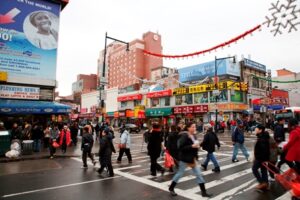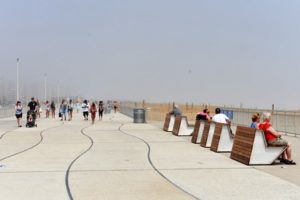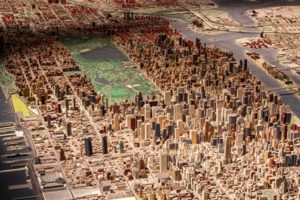By Victor Block

Not hungry enough for a sit-down breakfast, I munched on Tibetan dumplings purchased from a snack truck decorated with a sign that touted “Himalayan Fresh Food.” Lunch was a hurried affair at a five-table eatery where the menu special is yak meat washed down by salty yak milk tea.
For dinner, I chose a small restaurant which gives new meaning to the word “eclectic.” The Ecuadorean-born chef transforms basic South American fare with hints of Spanish, Chinese and other cuisines from around the world.
This once-in-a-lifetime dining experience took place in New York City’s borough of Queens which Lonely Planet guidebooks recently touted as the “Number one U.S. travel destination.” It praised the often-overlooked borough for its “global food culture,” exciting museum and art scene, and seaside attractions.
For many visitors, the greatest appeal is that Queens is the most ethnically diverse county in the United States. More than half of its residents were born outside the U.S., immigrated from over 120 counties and speak some 135 languages.
A good introduction to this cultural conglomeration comes during walks through its neighborhoods, which are adjacent in geography yet worlds apart in ambiance and atmosphere. A section of Jackson Heights would be at home in Central and South America. The feeling and food are very different in Flushing, the site of a Chinese community larger than Manhattan’s Chinatown. Astoria provides an introduction to Greek culture, with magnificent Greek Orthodox churches and tavernas that serve up traditional meze appetizers.
Astoria also is dotted by mini-neighborhoods occupied by immigrants from India, Korea, Romania and other far-flung countries. Given the name it’s no surprise that the Jamaica area has strong roots in the Caribbean. Then there are sections known as Little Egypt, Little India, Little Guyana, Little Colombia and Little Manila.
Along with its melting pot appeal, Queens boasts a variety of things to see and do. For example, fans of baseball and tennis have a rare opportunity for a behind-the-scenes look at landmarks of those games. Tours of the New York Mets’ stadium include the dugout, playing field and Mets Hall of Fame and Museum.
The Billie Jean King National Tennis Center, home of the US Open, provides an even more interactive experience. In addition to tours of its facilities, people may reserve time to play on the 12 indoor and 23 outdoor courts.
After several spirited games of tennis, what could be more inviting than a dip in the Atlantic Ocean? One of Queens’ biggest surprises is that several miles of inviting beaches line its border. Rockaway Beach has a seven-mile boardwalk that includes eateries, entertainment venues and more. Jacob Riis Beach offers shorter stretches of landscaped walkways.
Those who prefer indoor pursuits have a welcome choice of more than 30 museums. The Queens Museum is the logical place to begin. The building was erected to house the New York City Pavilion at the 1939 World’s Fair, and its permanent collection includes memorabilia from both that and the 1964 exposition.
The most dramatic exhibit is the Panorama of New York City, a 9,335-square-foot model which encompasses some 900,000 tiny structures built in intricate detail to exact scale. In this mini-metropolis, the Statue of Liberty is less than two inches high while the Empire State Building is a towering 15 inches.
If you’re still not convinced that Queens warrants a visit, or at least a day trip from Manhattan, add in a bustling Resorts World Casino, a pre-Revolutionary house and working farm, one of the major bird-watching sanctuaries in the Northeast and a 24-square-block arts district.
For more information about all that Queens has to offer visitors, log onto itsinqueens.com.
Photos/submitted














